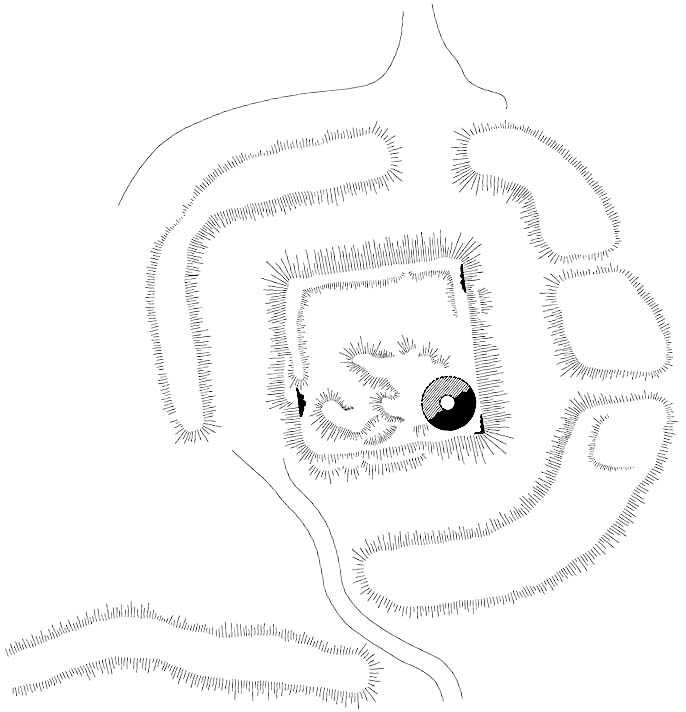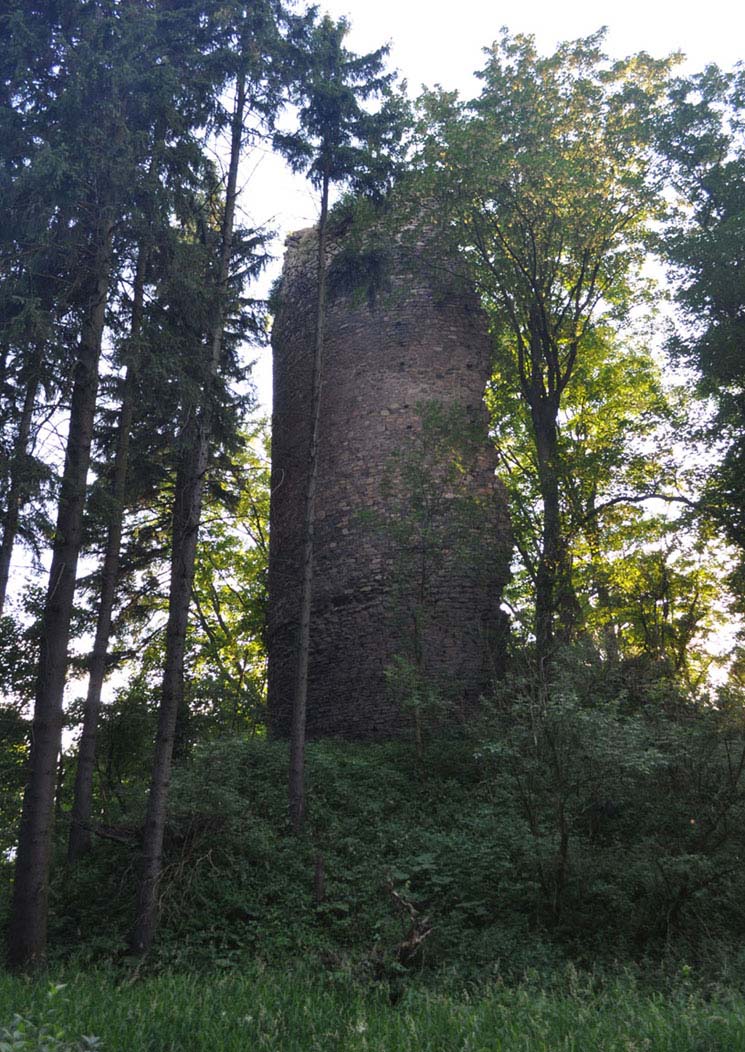History
The castle was built around the mid-14th century, probably on the initiative of the duke of Świdnica-Jawor Bolek II, as the watchtower of the route leading to the Czech. Some sources claim that the castle was a brigand seat and was captured by the prince. Before 1374, the castle passed into the hands of knight’s families. This year also comes the only mention of the local stronghold as the Lubno castle. In the first half of the fifteenth century, the stronghold was in the hands of the Hussites, which led to the retaliation expedition of the Silesian townspeople in 1437 and the destruction of the castle. The next destruction, after which it was never rebuilt, took place in 1509.
Architecture
The castle was erected in the flood terrace of the Lesk stream valley. It was a regular complex with buildings at the western and northern curtains and with a cylindrical tower of final defense. In tower’s preserved vertical cross-section, there is a circular room in the form of a shaft and the entrance to the tower located above it. It was placed at a considerable height, probably the second floor. Its location suggests that access to the bergfried was from the porch of the perimeter wall. The whole stronghold was surrounded by two wet moats and a dividing earth rampart. On the outside from the east side there was an outer bailey with traces of a brick building.
Current state
To this day, a square, earth rampart with a side of about 23 meters has been preserved, surrounded by two moats separated by another earth rampart. Two dykes ran from the south and west. There are relics of a quadrilateral perimeter wall and the cylindrical tower located in the south-east corner of the complex, preserved up to 12 m height.
bibliography:
Boguszewicz A., Corona Silesiae. Zamki Piastów fürstenberskich na południowym pograniczu księstwa jaworskiego, świdnickiego i ziębickiego do połowy XIV wieku, Wrocław 2010.
Leksykon zamków w Polsce, red. L.Kajzer, Warszawa 2003.



